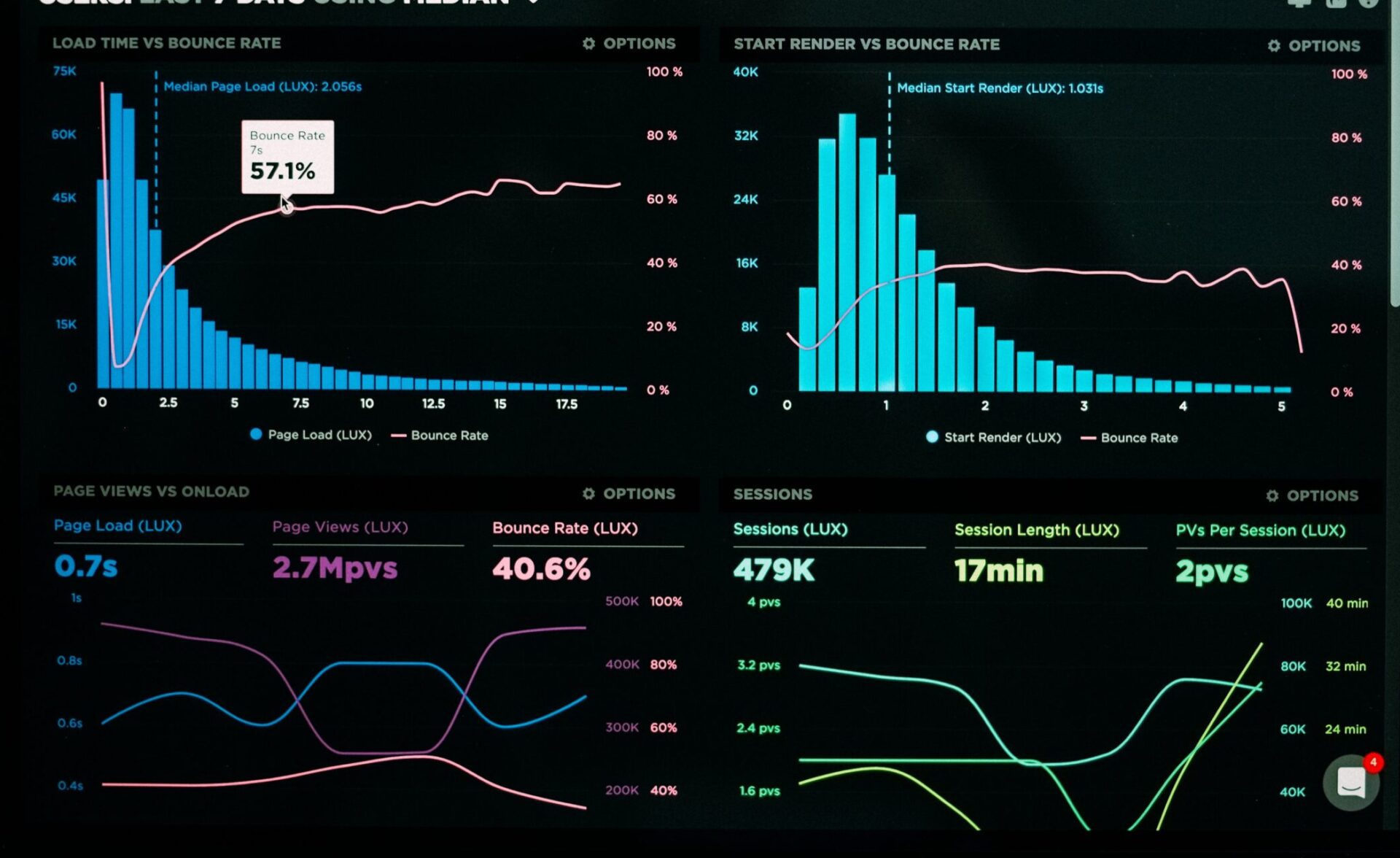SaaS: metrics to achieve growth
The list of SaaS metrics seems endless and, what’s more, always getting longer. Whether you are trying to find out how well your business is doing, want to find new growth opportunities or are looking for other information, the right metrics can provide you with this answer. Mind you, we are indeed talking about the RIGHT metrics. Wasting your time with vanity metrics or unactionable insights is a waste. In this blog, you will find are the most valuable metrics for SaaS platforms.
KEY LEARNING POINTS
- The key metrics in SaaS
- Creating insight into business results
- Being able to find new growth opportunities
ARR: Annual Run Rate
ARR or Annual Run Rate is your monthly recurring revenue (MRR) on an annual basis. It is a prediction of how much revenue your business will generate annually based on your current MRR. ARR assumes that nothing in your current business will change throughout the year. The metric does not take into account new connected customers or expansion revenue.
Do you calculate ARR simply by multiplying ARR by 12? Yes, it is that simple.
ARR is far from the most accurate way to predict how much revenue your business will generate this year, however, it is a helpful metric for predicting growth.
ARR is based on your current MRR, assuming nothing else changes for the rest of the year. However, something always changes. But when you combine your ARR with your average churn rate and MRR growth, you can start planning how things like new product lines, price changes and campaigns will affect your sales.

ARPU: Average Revenue Per User
ARPU is the average amount of revenue you earn monthly from each of your active customers. MRR / # active customers = ARPU
For example, if your monthly recurring revenue (MRR) is $100,000, and you have 1,000 active customers, your ARPU is $100 [$100,000 (MRR) / 1,000 (active customers)].
ARPU is calculated based on active customers, not the total number of users. A big mistake SaaS companies make when calculating their ARPU is dividing their MRR by the total number of users. ARPU is based on revenue. Since free users do not contribute to your revenue, they should be excluded from your calculation.
One of the most obvious reasons to track ARPU is because it directly correlates to your MRR. If you are able to increase your ARPU, you increase your MRR (assuming you connect customers/users).
ARPU also gives you insight into the long-term viability of your business and your ability to scale. For example, with an ARPU of $5, it becomes very difficult to scale because you depend on having a large number of customers. And the more customers you have, the more resources you have to devote to support and engineering. It can then be difficult to make your business profitable.
Churn
Churn is the percentage of customers or sales lost in a given period (usually monthly). Most SaaS entrepreneurs monitor two different types of churn.
Customer churn: percentage of customers lost
(# cancelled customers last 30 days / Active customers 30 days) * 100
Revenue churn: percentage of revenue lost
(MRR Lost to Downgrades & Cancellations last 30 days ÷ MRR 30 days) * 100
In most cases, when you hear a SaaS entrepreneur talk about churn they are talking about losing customers. But revenue is equally, if not more, important. In fact, with customer churn we only consider customers who cancel their account altogether. Churn on revenue gives a more realistic picture given we can take into account downgrades, for instance.
SaaS companies depend on long-term customers to grow. The longer your customers pay, the better. If you are not able to control your churn, it will eat away at your revenue to the point where your business becomes unsustainable. No matter how many new customers you can acquire every month, if you fail to retain them long-term, you are basically on a hamster wheel going nowhere.
It is important to actively analyse and reduce your churn. Even if you have a low churn rate (say 2% or less), you need to constantly look for ways to keep it as low as possible.
For most SaaS companies, a churn rate of 5-7% is considered “healthy”. Once you start hitting over 10% monthly churn on a regular basis, it is a sign that something is wrong and you really need to do a deep dive into what is going on with your business.
Whitepaper SaaS ontwikkeling (Dutch)
Net Dollar Retention
NDR is a metric, expressed as a percentage. It illustrates the (changed) revenue of current users that a company can retain compared to another period, taking into account downgrades, upgrades and churn.
(Starting MRR + expansion – downgrades – churn)/ Starting MRR *100 = NDR
NDR, or Net Dollar Retention, is not as well known as MRR, but it is a particularly valuable metric. Especially for SaaS entrepreneurs. But why is NDR so important? First of all, it is quite possible that your MRR is growing while you are actually losing money. This can happen, for example, when the revenue stream from new customers exceeds the net loss of revenue from your existing user base.
Suppose your company starts this month with €100,000 in MRR. It books €50,000 in new subscriptions, zero in expansion revenue, suffers €20,000 in downgrades and €5,000 in churn.
In this example, your MRR increases by a whopping 25%. And yes, you can open the Champagne for that. But your NDR comes out to only 75%. You lost 25% of your MRR from your current userbase. And what was your marketing budget? What did you spend to acquire these new users? NDR will be the most important metric for SaaS entrepreneurs is 2021.
“How well is your business doing? Where are opportunities for growth? Measurement=knowing also applies to SaaS.”
MRR: Monthly Recurring Revenue
MRR is the amount of revenue you get from your customers every month. However, MRR is different from your company’s total revenue. For example, if you have a SaaS business and also sell additional one-off services, such as setup fees, consulting or other one-off payments, these should not be included in your MRR. As the name suggests, MRR only includes revenue from recurring payments/subscriptions.
MRR can be divided into two groups:
- New MRR: Monthly Recurring Revenue from new customers.
- Expansion MRR: Monthly Recurring Revenue from existing customers.
It’s probably no surprise, but you need MRR to keep your business running. If your MRR is increasing, it means more revenue is coming in every month. You are bringing in more revenue than you are losing, and hopefully you have healthy MRR growth.
But if you have long periods of declining MRR, you need to look into what is going on. Are customers churning faster or more than usual? Are you not bringing in as many new customers? Are you missing opportunities for expanding MRR?
The more you understand where your MRR is coming from and how it is evolving, the easier it is to create a strategy for growth.
Contraction MRR
Contraction MRR is MRR lost from existing customers. Lost revenue can come from customers downgrading their plan, reducing the number of users on their plan, not being able to pay, or anything else that reduces the amount of money an existing customer pays you monthly.
Contraction MRR does not include customers who have cancelled. It should only include lost revenue from customers who are still active.
In most cases, contraction is a value issue. People feel they are not getting enough value from their current subscription to justify the price (for whatever reason), so they reduce their value or make other discounts.
Expansion MRR
MRR is additional MRR that comes from existing customers. It can come from users who upgraded their account, bought an add-on product, added additional users to their account or anything else that increases the amount of money they pay you each month.
In some cases, you can build MRR’s add-on capabilities directly into your business model. For example, if you sell a B2B SaaS product aimed at teams, you can charge per seat. As your client’s team grows, they add additional users to their account, creating expansion MRR.
CAC: Customer Acquisition Cost
CAC is the amount of money you spend to acquire a new customer. To calculate CAC, divide all customer acquisition costs by the total number of customers acquired in a given period. This is the basic formula:
Total CAC cost / number of customers acquired.
Not all SaaS entrepreneurs calculate this total CAC cost the same. Some will include everything like advertising expenses, salaries and tools, and others prefer to just include advertising expenses. The former is a bit more complicated to do, and the latter is a bit less detailed.
CAC is important because it helps determine the profitability of your business. If you spend more to acquire customers than the revenue they generate, you are not making money. Even if your MRR increases every month, you won’t make a profit unless you can get more money from clients than it costs you to acquire them.
LTV: Lifetime Value
Customer lifetime value (LTV) is an estimate of how much revenue you will make from the average customer before they cancel.
Average monthly MRR per user / User Churn Rate
If your CAC is greater than your LTV, or you just want to increase your LTV, there are plenty of things you can do:
- Adjust your pricing
- Shorten your churn time
- Optimise your CAC
- Increase your expansion MRR
Quick Ratio
Compared to the other metrics on this list, quick ratio is a pretty traditional metric. But sometimes it is necessary just to check how things are going and how your growth trajectory is progressing. The Quick Ratio (also called the Acid-Test) is a number that indicates how efficiently your business is growing at its current sales and churn rate. Generally, the higher your Quick Ratio, the more efficiently you can grow your SaaS business.
(New MRR + Expansion MRR) / (Contraction MRR + Churned MRR) = Quick Ratio
The purpose of the Quick Ratio is to tell you how efficient and sustainable your growth is. Your Quick Ratio should not be the end result for your business, as there are many factors at play. But it can give you a good idea of where your business is going.
Lead Velocity Rate
The Lead Velocity Rate of a SaaS platform is the percentage of qualified leads the marketing department manages to bring in. In fact, the Lead Velocity Rate illustrates the development of your pipeline. LVR shows how many qualified leads you are converting to paying customers.
(# Qualified leads current month – # Qualified leads last month) / # Qualified leads last month X 100 = % Lead Velocity Rate
The Lead Velocity Rate (LVR) can be calculated by first subtracting the number of qualified leads last month from the number of qualified leads this month. Then divide by the number of qualified leads last month and multiply by 100 to convert it to a percentage.
Ready for next level product development?
Let's create a digital product that end users and business stakeholders will love and that is also future-proof, scalable, secure and easy to maintain.

 9 min
9 min 



